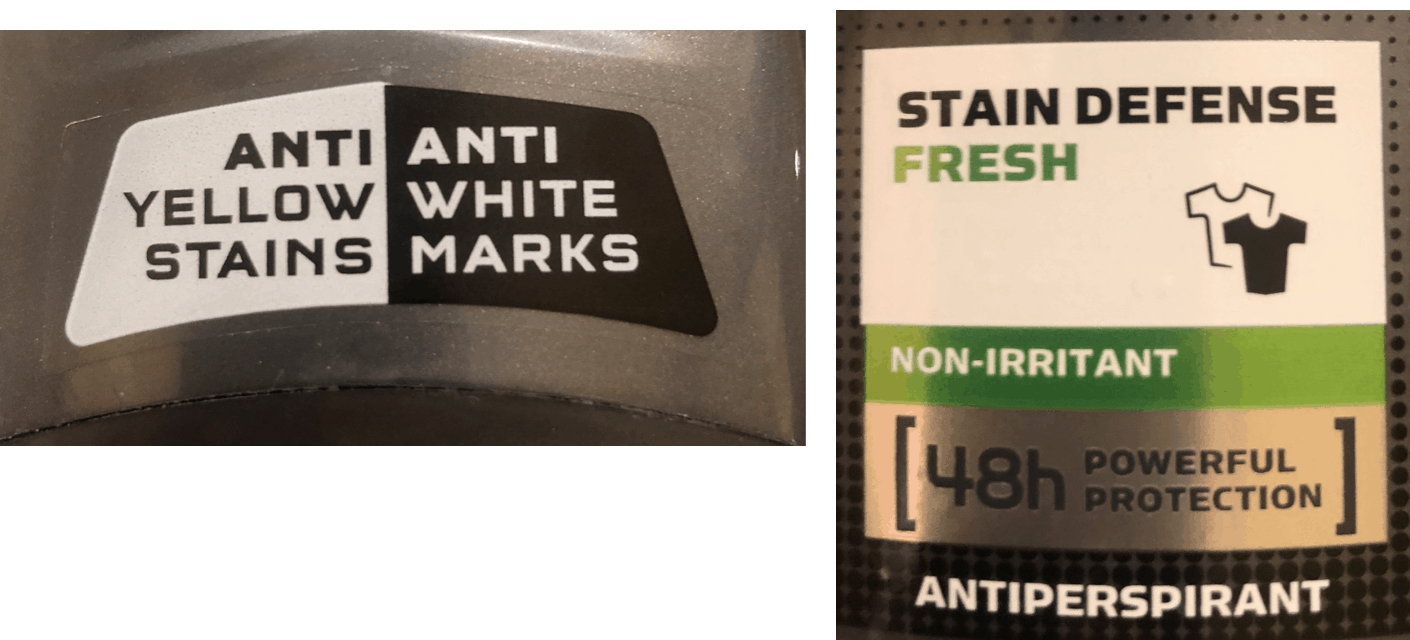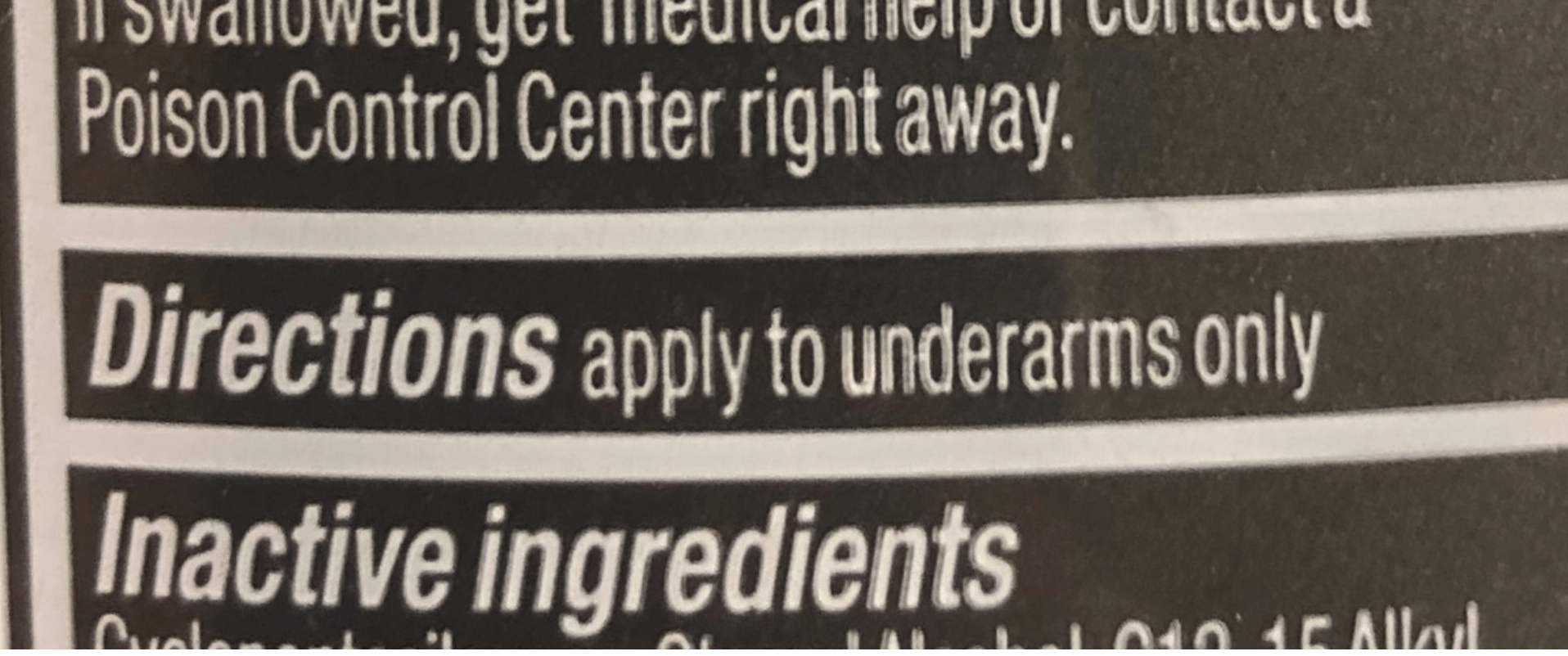“The way we've always done it” doesn't mean that's the right way or the best way to do something.
One of my daily habits is putting on antiperspirant. Your standardized work might vary from mine, as there might not be an established single “one best way” that works for everybody.
Variation might include:
- Not using such a product at all
- Using a deodorant that's not also an antiperspirant
- Using a spray or a liquid “
roll on ” instead of a solid stick - Using a product that doesn't contain aluminum as an active ingredient
- And so on
I've never given too much thought to this daily routine. I guess it's “worked for me” as people sometimes say about their version of standardized work in the workplace.
In workplace settings, it might be VERY important that we have standardized work that's consistent across people… what we do, when it's done, and HOW we do it might be a matter of life and death in some circumstances.
Back to my armpits… I've sometimes noticed a problem where the underarms of dark shirts would seem discolored or stained. I guess I should have realized that part of the problem is that the product is getting on my shirts instead of just under my arms. I could have framed the problem that way.
Instead, I bought into the marketing of a particular product that claims to avoid the stain problems with dark shirts or white shirts, as it says on the package in two different places… this is deemed a selling feature. And, it's one I apparently value as a customer, since I chose to buy it.

I think this countermeasure has been effective in avoiding stains.
But, when I was on vacation, I noticed that my underarms felt sticky not long into the day… and it wasn't very hot outside. I think the product had gotten onto the inside of my shirt. It wasn't very comfortable.
So, I mentally “pulled the andon cord” and figured I should go into problem solving mode.
I thought about my personal process. After showering in the morning, I'd apply the product… up, down, up, down, up, down, up, down. I guess I was using about eight “strokes” of product.
Was this the right amount? Was I using too much?
The package wasn't very helpful in terms of instructions. I mean, it's just antiperspirant, why overthink it?

“Apply to underarms only”
That's not very specific, is it? The package also states that swallowing the product is bad.
When should I apply it? How specifically? How much should I use? Or not use? The package does promise “48 hour protection” which suggests I don't need to use it every day? Hmmmm.
I could have gone through cycles of Plan Do Study Adjust problem solving.
But, I decided to do some research. What does the “literature” (using the term loosely) say about this?
I found this article:
This Is The Correct Way To Apply Antiperspirant And It's Blown Our Minds
“One of the mistakes people make, according to Harper, is putting on deodorant or antiperspirant right after we get out of the shower, when our armpits are damp.”
I've been making that mistake. I've been putting it on after toweling off a bit. I should change the sequence of my morning routine and maybe use the antiperspirant AFTER shaving and other morning steps. Am I shaving the right way?? I'll leave that for another day. I don't think there's a problem to solve there (and, yeah, I don't shave my entire face).
I should be letting my armpits dry more completely. That's a new habit to form. I also learned that I should let the product dry more completely before putting on a shirt. That process change probably eliminates the need for the “non-staining” product. That first countermeasure of mine (switching product) wasn't a fully-effective solution. It
That day on vacation, I wondered, “Am I using too much?” My instinct or what I was starting to finally surmise is true:
“Apply two strokes up and two strokes down to each armpit. You should only need to do this once or twice a week,” she explained.
As the experts say, more product isn't more effective.
My mental model was that more product WAS more effective. I thought the product being on the SURFACE of your skin is what made the difference. Therefore, more is better. But, using more is just good for the manufacturer of the product, since you're using more and purchasing it more often.
The more accurate mental model is that antiperspirant is ABSORBED through the skin (which is probably why some people want to use an “all natural” product).
The fact that the product is absorbed, means you don't have to apply it immediately after a shower. A better practice is to actually do it in the evening before bed:
“…you put it on in the
evening, when body temperature is lower. And if done correctly, it can keep sweat at bay for a full 24 hours, possibly even more if you're not sweating excessively.”
This newly-realized and more-accurate mental model means I use antiperspirant differently. If I've showered in the afternoon, after exercising, or if I've taken a dip in the pool… I don't feel the need to put on a fresh coating of antiperspirant. It's already been absorbed into my skin (ew?) and that effectiveness doesn't wash away as would product on the surface of my skin.
So, I've taken this random detour into personal hygiene. But, does this thought process remind you of problem solving techniques at work? How did I do? Was I being an effective problem solver?
My personal process with the cycles of PDSA…
- Plan: Notice there is a problem (still a bit uncomfortable when using antiperspirant), investigate
- Do: Put on MORE product each time
- Study: Getting stains on shirts, still a bit uncomfortable
- Adjust: Try something different
- Plan: Research different products
- Do: Switch antiperspirants
- Study: It's not staining shirts anymore, but still a bit uncomfortable at times
- Adjust: Research best practices
- Plan: Decide to put on LESS product, after totally dry, wait before putting on shirt
- Do: Try this
- Study: What's the effect? Did it work? Yes — Any side effects? No
- I think the new process of applying less product on dryer armpits works better
- Adjust: Keep doing it this way
Risk: Trying multiple countermeasures at the same might hamper my cause-and-effect understanding of what I've tried and the results I get.
Have you solved (or at least worked on) problems this way in the workplace or in your personal life? Do you have examples of what we might call “Everyday Lean”?
Please scroll down (or click) to post a comment. Connect with me on LinkedIn.
Let’s work together to build a culture of continuous improvement and psychological safety. If you're a leader looking to create lasting change—not just projects—I help organizations:
- Engage people at all levels in sustainable improvement
- Shift from fear of mistakes to learning from them
- Apply Lean thinking in practical, people-centered ways
Interested in coaching or a keynote talk? Let’s start a conversation.







![When Was the Last Time a Leader Around You Admitted They Were Wrong? [Poll]](https://www.leanblog.org/wp-content/uploads/2025/07/Lean-Blog-Post-Cover-Image-2025-07-01T212509.843-100x75.jpg)


LinkedIn comments: